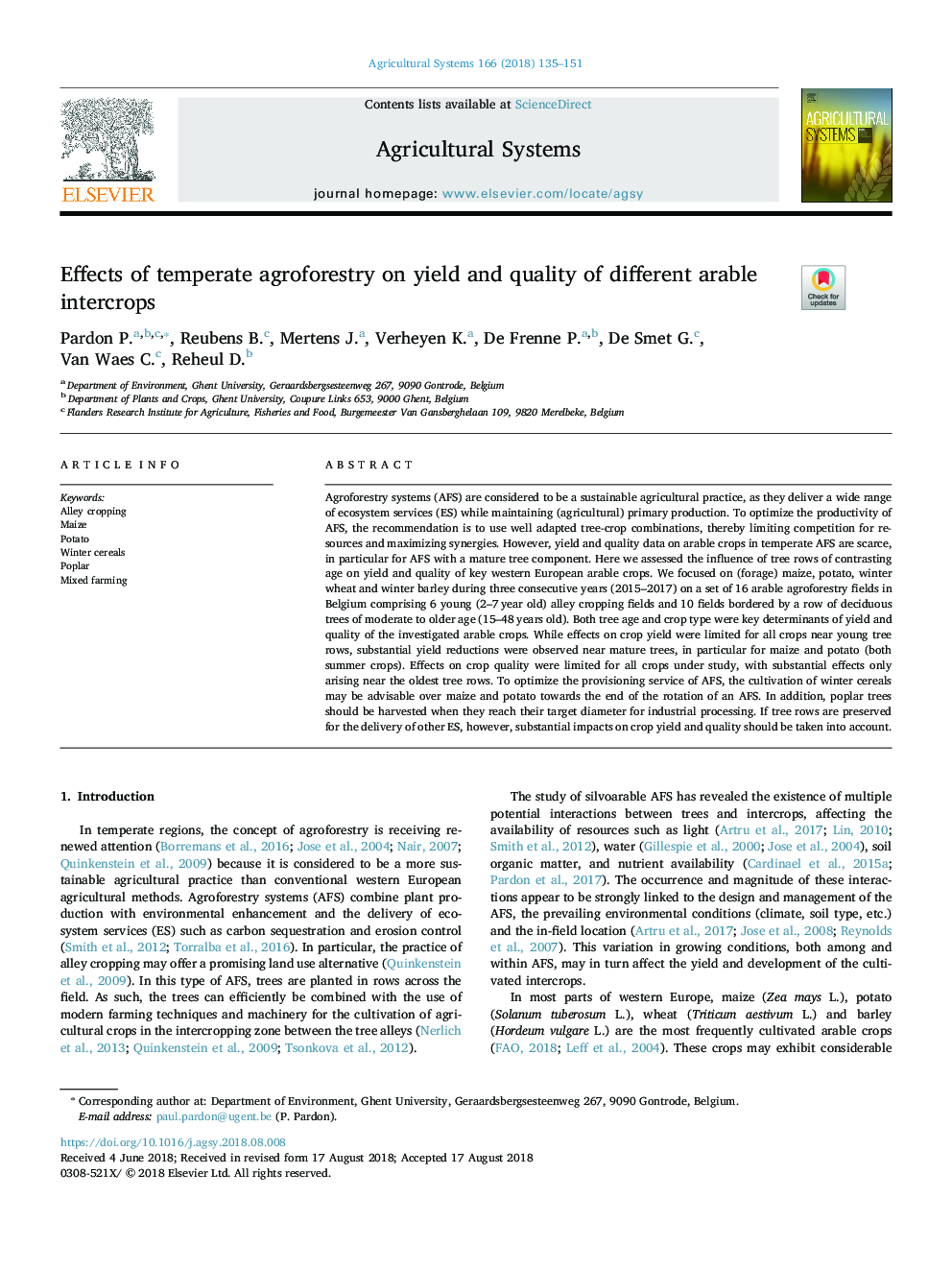| Article ID | Journal | Published Year | Pages | File Type |
|---|---|---|---|---|
| 10116000 | Agricultural Systems | 2018 | 17 Pages |
Abstract
Agroforestry systems (AFS) are considered to be a sustainable agricultural practice, as they deliver a wide range of ecosystem services (ES) while maintaining (agricultural) primary production. To optimize the productivity of AFS, the recommendation is to use well adapted tree-crop combinations, thereby limiting competition for resources and maximizing synergies. However, yield and quality data on arable crops in temperate AFS are scarce, in particular for AFS with a mature tree component. Here we assessed the influence of tree rows of contrasting age on yield and quality of key western European arable crops. We focused on (forage) maize, potato, winter wheat and winter barley during three consecutive years (2015-2017) on a set of 16 arable agroforestry fields in Belgium comprising 6 young (2-7â¯year old) alley cropping fields and 10 fields bordered by a row of deciduous trees of moderate to older age (15-48â¯years old). Both tree age and crop type were key determinants of yield and quality of the investigated arable crops. While effects on crop yield were limited for all crops near young tree rows, substantial yield reductions were observed near mature trees, in particular for maize and potato (both summer crops). Effects on crop quality were limited for all crops under study, with substantial effects only arising near the oldest tree rows. To optimize the provisioning service of AFS, the cultivation of winter cereals may be advisable over maize and potato towards the end of the rotation of an AFS. In addition, poplar trees should be harvested when they reach their target diameter for industrial processing. If tree rows are preserved for the delivery of other ES, however, substantial impacts on crop yield and quality should be taken into account.
Related Topics
Life Sciences
Agricultural and Biological Sciences
Agricultural and Biological Sciences (General)
Authors
Pardon P., Reubens B., Mertens J., Verheyen K., De Frenne P., De Smet G., Van Waes C., Reheul D.,
